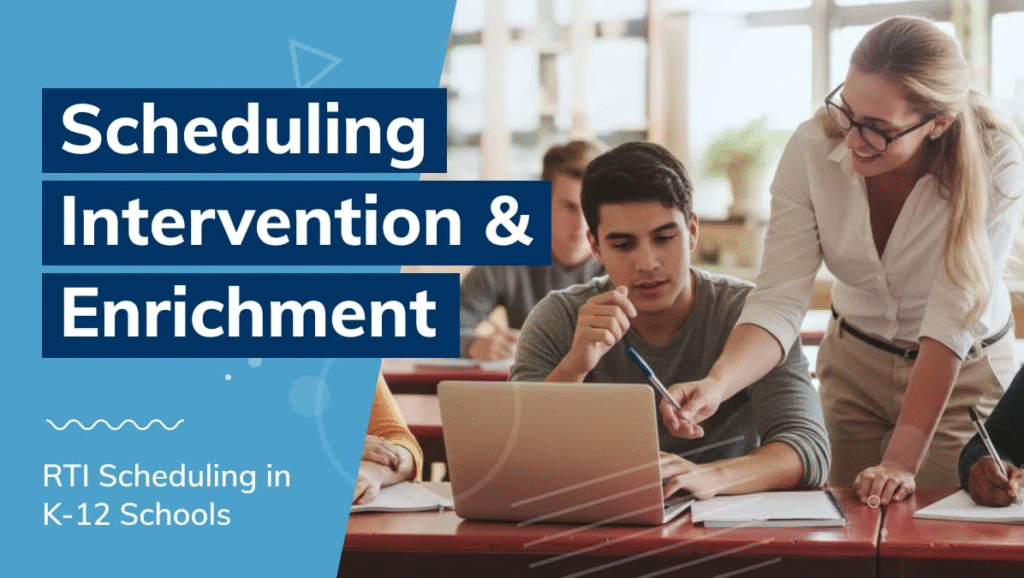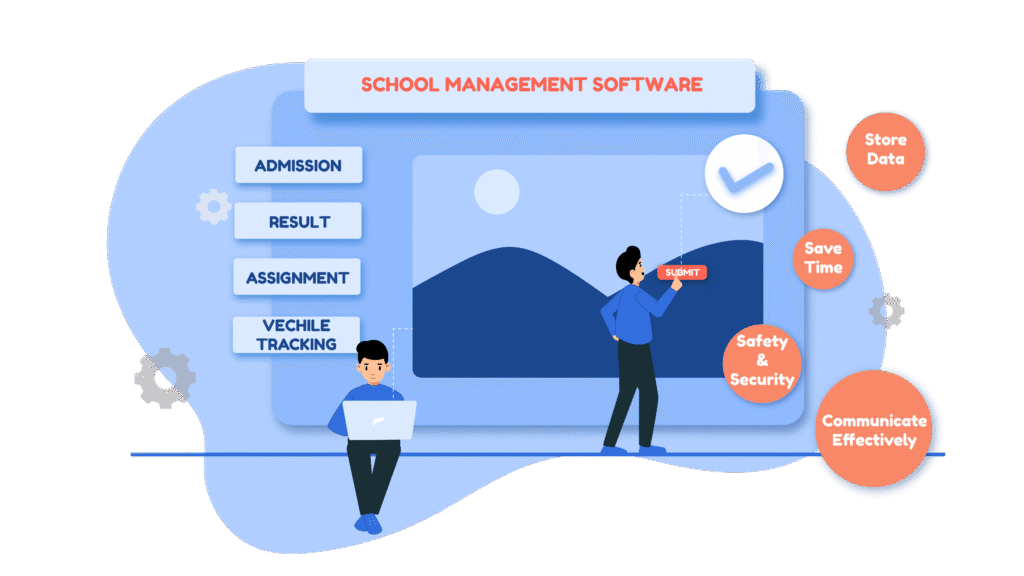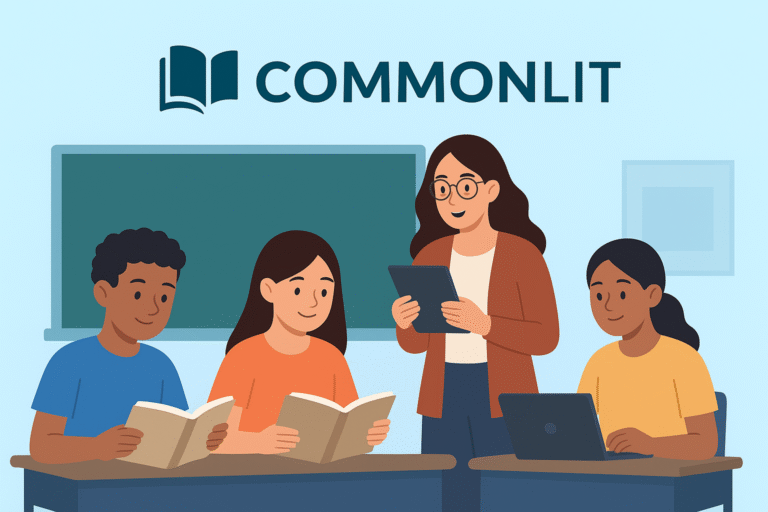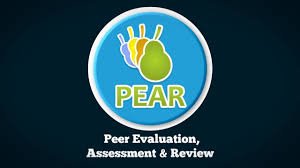RTI Scheduler, Key Features, Benefits & Why It’s Essential for Language Service Providers
Schools today are adopting smarter digital tools to support students who need targeted academic or behavioral help. Response to Intervention (RTI) is one of the most effective systems used to identify struggling learners and provide them the right support at the right time. An RTI scheduler helps teachers and staff plan intervention sessions with better accuracy and organization.
With a digital RTI scheduling tool, schools can simplify planning, grouping, and managing student interventions without wasting time on spreadsheets. These tools bring efficiency by reducing errors and helping teams work together more effectively. As education becomes more technology-driven, RTI scheduling software plays a powerful role in improving overall student success.
What Is an RTI Scheduler?
An RTI scheduler is a digital tool used by schools to plan, organize, and track student intervention sessions. It helps teachers identify which students need support and automatically schedule group sessions based on their needs. The system also ensures that time slots do not overlap with classes or assessments.
Schools rely on RTI schedulers to keep intervention plans consistent and aligned with student goals. Instead of manually tracking everything, the system organizes schedules, progress updates, and session times in an easy to manage format. This leads to better intervention planning with fewer errors and higher student engagement.
Why Schools Need RTI Scheduling Tools
Managing interventions manually becomes difficult when there are dozens of students and multiple grade levels. A single mistake can lead to scheduling conflicts, missed sessions, or incomplete data tracking. RTI scheduling tools provide a centralized system where everything is organized properly.

Schools save time by automating repetitive tasks such as creating groups, arranging time slots, and sending reminders. Teachers focus more on supporting students instead of managing paperwork. Administrators also gain clear visibility into interventions happening across grade levels and departments.
Key Features
RTI scheduling tools come with many features designed to simplify planning and student management. One of the most important features is automated schedule creation, which organizes intervention slots according to student needs and staff availability. This minimizes errors and ensures every student is supported.
Another key feature is progress monitoring, which helps teachers track student improvements over time. Reports generated by the system provide insights that help educators adjust instruction and identify areas needing attention. Communication tools also allow quick sharing of updates between teachers, parents, and administrators.
Automated Scheduling
RTI Scheduler allows you to automatically schedule appointments, interpreters, or staff based on availability, location, and skill set. This reduces manual errors and saves time in assigning tasks. The system can also handle recurring appointments efficiently.
Real-Time Availability Tracking
The software provides real-time visibility of interpreter or staff availability. Managers can see who is free, busy, or on leave, which ensures optimal resource allocation and prevents double-booking.
Multi-Location Support
RTI Scheduler can manage appointments across multiple locations or branches. This is especially useful for language service providers working in hospitals, courts, or offices in different cities.
Client & Case Management
The platform stores client profiles, case histories, and interpreter assignments. This makes it easy to match clients with the right interpreter based on language, expertise, or case requirements.
Notifications & Alerts
Automated email, SMS, or push notifications remind interpreters, staff, and clients about upcoming appointments. Alerts for changes, cancellations, or urgent requests help reduce no-shows and miscommunication.
Reporting & Analytics
RTI Scheduler generates reports on bookings, interpreter utilization, case trends, and performance metrics. These analytics help managers make data-driven decisions, identify bottlenecks, and improve efficiency.
Mobile Access
The scheduler is accessible via mobile devices, allowing interpreters and managers to view schedules, accept assignments, or update availability on the go. This is crucial for field-based teams.
Integration with Other Systems
The software can integrate with calendars (Google, Outlook), payroll, or billing systems. This ensures seamless workflow and reduces repetitive administrative tasks.
Customizable Rules & Preferences
Managers can set rules for assignments, such as prioritizing certain interpreters, limiting daily bookings, or assigning based on skill level. This ensures compliance with internal policies and client requirements.
Multi-Language & Accessibility Support
RTI Scheduler supports multiple languages and is designed to be accessible for users with disabilities, ensuring inclusivity for interpreters and clients alike.
Security & Compliance
Data security is crucial in sensitive cases. RTI Scheduler offers role-based access, encrypted data storage, and compliance with regulations like GDPR or HIPAA.
Easy Rescheduling & Cancellations
The platform allows quick rescheduling or cancellations without disrupting other appointments. It also automatically notifies affected parties to keep everyone updated.
Payment & Billing Management
Some versions include billing features to generate invoices, track payments, or calculate interpreter fees automatically, simplifying financial management.
How RTI Scheduling Works in Schools
The process begins by identifying students who need targeted intervention based on assessments or teacher observations. Once identified, the scheduler creates groups or individual sessions according to the type of support needed. These sessions are placed into a structured calendar that fits both student and teacher schedules.

During each session, teachers record progress notes and update the system to keep data consistent. Administrators can view these updates in real time to track improvements or analyze intervention performance. This workflow ensures that every intervention is documented and aligned with student learning goals.
Benefits of Using Software
RTI scheduling software improves coordination by organizing intervention plans in one place. Teachers no longer need separate notebooks, spreadsheets, or manual worksheets to track student progress. Everything is stored securely within the system, making data more reliable and accessible.
The software helps improve student achievement because interventions happen consistently and on time. Automated reminders reduce missed sessions and ensure teachers stay aware of upcoming tasks. Schools benefit from increased accuracy, better reporting, and improved communication between team members.
Automated Group Creation & Management
Creating intervention groups manually takes time and may lead to mismatched student needs. An RTI scheduler automatically groups students based on academic performance, intervention level, and learning needs. This ensures each group is meaningful and aligned with instructional goals.
Teachers can adjust groups easily as student performance changes over time. The system updates schedules instantly, preventing confusion or overlapping sessions. This flexibility allows educators to adapt quickly to student progress and provide targeted instruction when needed.
Streamlined Teacher & Student Scheduling
A scheduling system ensures that intervention sessions do not interfere with regular classes or essential school activities. Teachers can view their schedules in real-time across multiple platforms including desktop and mobile. This provides better organization and reduces last-minute conflicts.
Students also benefit from predictable routines because the system ensures sessions are properly spaced and consistently scheduled. With timely interventions, students can focus on learning improvement without being pulled out of important classes unnecessarily.
Multi Tier Intervention Planning
RTI includes Tier 1, Tier 2, and Tier 3 interventions based on the level of student support needed. An RTI scheduler helps manage all three tiers in an organized manner. Each tier requires different strategies, resources, and time allocations.

The scheduler ensures that Tier 2 and Tier 3 students receive focused attention without missing essential classroom instruction. It aligns intervention frequency with district guidelines to maintain consistency and quality. This structured approach improves academic outcomes and reduces intervention gaps.
Real Time Progress Monitoring & Reporting
Tracking student progress manually can lead to errors or incomplete data. RTI scheduling systems include digital progress tracking tools that allow teachers to record session outcomes immediately. These updates provide real-time insights into student performance.
Administrators use these reports to identify patterns and make informed decisions about resource allocation. Parents also appreciate transparent updates that show their child’s academic growth. Better reporting leads to stronger accountability and improved instructional planning.
How RTI Schedulers Improve School Wide Communication
Communication is essential for successful intervention planning. An RTI scheduler connects teachers, administrators, and intervention staff through messaging tools and shared dashboards. Everyone stays informed about student progress and scheduled sessions.
Parents may also receive automated updates or reminders, improving participation and reducing confusion. When communication is strong, schools provide more consistent support to struggling learners. This creates a coordinated environment where success is shared across the system.
Classroom Level Benefits for Teachers
Teachers benefit from reduced workload because the scheduler handles many administrative tasks automatically. They spend more time teaching and less time organizing schedules or managing paperwork. This improves teacher morale and boosts productivity.
The system also provides easy access to student history and performance data. Teachers can adjust instruction based on reliable insights rather than assumptions. This leads to more meaningful interventions and better student achievement.
Student Centered Advantages
For students, the primary advantage is timely and consistent intervention support. They receive help based on actual performance data instead of guesswork or delayed assessments. This early support prevents academic struggles from becoming long term issues.
Students also feel more confident when they see measurable improvements in their performance. Structured scheduling makes interventions predictable, which helps reduce stress and increases engagement. With better support, students are more likely to meet academic milestones.
Administrators & School Leaders
School leaders need tools that provide visibility into academic support systems. RTI schedulers offer dashboards that highlight trends, gaps, and areas requiring more attention. This makes it easier for administrators to allocate resources and support teachers effectively.
These tools also support compliance by documenting interventions properly. Complete reports reduce audit pressure and ensure district requirements are met. This strengthens the school’s intervention framework and maintains high standards.
Integrations With School Management Systems
Most modern RTI scheduling tools integrate seamlessly with SIS and LMS platforms. Integrations automate data syncing so student information remains accurate and updated. This eliminates duplicate work and reduces errors.

Schools can connect attendance, assessment data, and classroom schedules to create a unified system. This integrated structure improves decision-making and ensures all student support data is available in one place.
Choosing the Right RTI Scheduler
Schools should evaluate features such as automation, progress tracking, integrations, and ease of use. The best RTI scheduler is one that adapts to unique school needs and handles multiple grade levels.
It should also provide reliable reporting tools and allow customization based on district policies. Considering long term scalability helps ensure the system remains useful as student needs grow and change.
FAQs
What is an RTI scheduler used for in schools?
An RTI scheduler is used to plan, organize, and track intervention sessions for students who need academic or behavioral support. It helps teachers manage time blocks, form groups, assign interventions, and monitor progress in a structured and efficient way.
Is an RTI scheduler only for large schools?
No. RTI scheduling tools work for both small and large schools. Smaller schools benefit from simplified planning, while larger institutions use the system to manage hundreds of students, teachers, and intervention periods without scheduling conflicts.
How does an RTI scheduler create intervention groups?
The system analyzes student data such as assessment results, progress reports, and intervention levels. It then automatically forms groups based on similar needs, grade level, or support categories. Teachers can adjust these groups anytime as students improve.
Does an RTI scheduler support all RTI tiers?
Yes. RTI schedulers support Tier 1, Tier 2, and Tier 3 interventions. They assign frequency, time blocks, and intervention types according to each tier’s requirements, helping schools maintain consistency and compliance.
Can teachers update student progress inside the scheduler?
Absolutely. Teachers can record session comments, track skill improvements, upload notes, and update performance indicators directly within the system. This ensures accurate and real-time monitoring of student progress.
How does an RTI scheduler prevent scheduling conflicts?
The tool reviews student timetables, staff availability, and classroom schedules before creating intervention blocks. It automatically avoids overlapping sessions, testing periods, and core instruction time to maintain balance and consistency.
Does an RTI scheduler integrate with School Information Systems (SIS)?
Yes. Most RTI schedulers connect with SIS platforms to sync attendance, schedules, assessments, and performance data. Integrations reduce manual data entry and ensure student information remains accurate across all systems.
Is training required to use an RTI scheduler?
Basic training is recommended, especially for teachers and intervention staff. Most tools are user-friendly, offering tutorials, onboarding sessions, and support portals. After initial setup, daily usage becomes very easy.
How secure is student data inside an RTI scheduler?
Modern RTI scheduling systems use encrypted storage, role-based access, and secure cloud environments to protect student data. They follow FERPA and district-level privacy standards to keep personal information safe.
Can parents access intervention information through the scheduler?
Some RTI schedulers offer parent portals where guardians can view session updates, progress reports, and schedules. Access depends on school settings and privacy rules. Schools can also send automated email or SMS updates to parents.
Does an RTI scheduler help with district compliance?
Yes. RTI schedulers store documentation such as session logs, attendance records, intervention frequency, and progress data. These records help schools meet district and state-level requirements with accurate, ready-to-use reports.
Conclusion
An RTI scheduler is a powerful tool that simplifies interventions, improves planning, and strengthens student support systems. It enables teachers, administrators, and parents to work together toward academic growth. With automated scheduling, real-time tracking, and structured reporting, schools can deliver consistent support to every learner.
As education continues to evolve, digital scheduling tools will remain essential for managing interventions efficiently. Investing in the right RTI scheduler leads to better student outcomes and a stronger academic environment.






